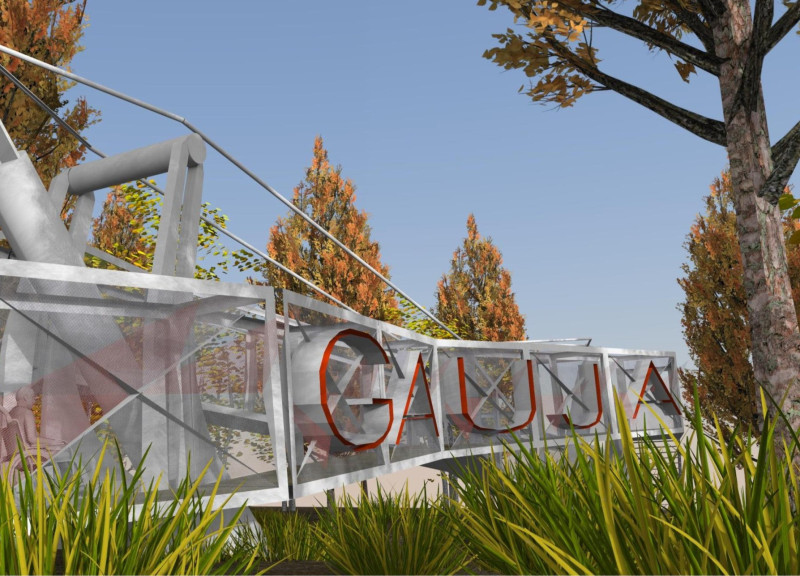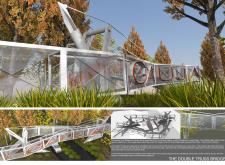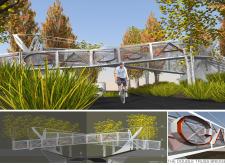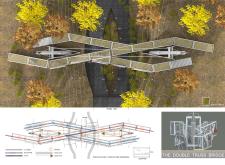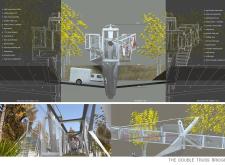5 key facts about this project
The Double Truss Bridge over Gaujas lela connects two important pathways in a way that respects both users and the natural landscape. It features a walking bridge mainly for pedestrians and a ramp bridge designed for vehicles. Each bridge serves a specific function while contributing to an efficient flow of traffic. The design also encourages interaction with the environment, integrating the structure into its scenic surroundings.
Structural Features
Embedded masts support the Double Trusses at both ends. These masts help the trusses maintain balance and strength. They are positioned just above where the road dips, allowing vehicles to pass underneath without interruption. This setup optimizes the use of space and ensures safe passage for all types of traffic.
Design Integration
The two bridges meet at an interesting zigzag point. This design choice guides users as they move through the space, making the transition between the pedestrian and vehicular areas feel natural. The walking bridge slopes gently downward, while the ramp bridge rises toward the center, allowing for a smooth flow between different pathways.
Material Considerations
The choice of materials is important for both function and durability. High tensile steel cables, steel mast assemblies, and welded steel trusses work together to create a strong and reliable structure. The addition of mesh screens and handrails enhances safety and provides a visual element that fits well into the landscape.
Visual details, like the mesh screens and landscaped slopes, add character to the bridge. These features not only improve the appearance but also reinforce its role as a vital connection in the community. Every aspect of the design reflects a careful consideration of both structure and user experience.


